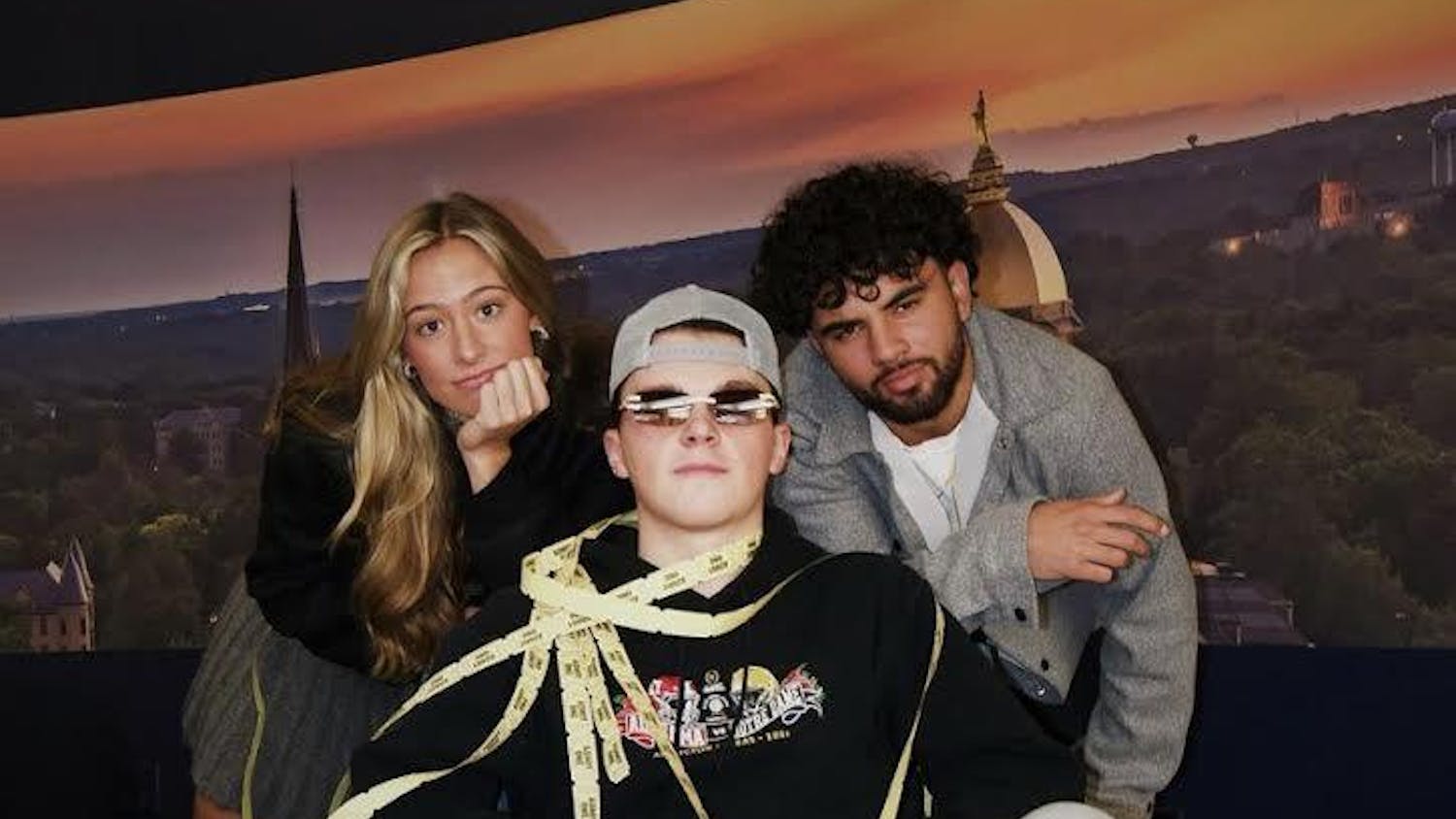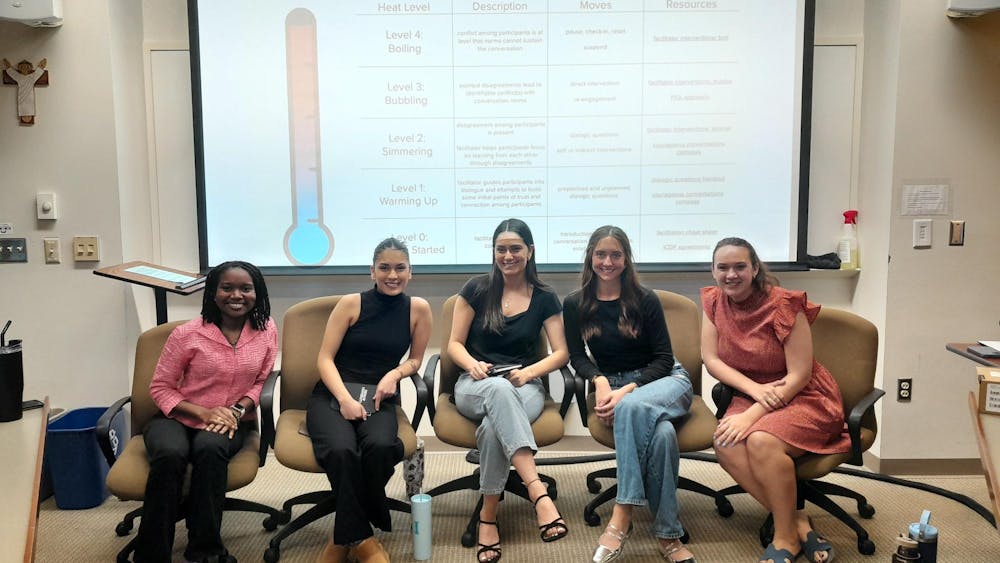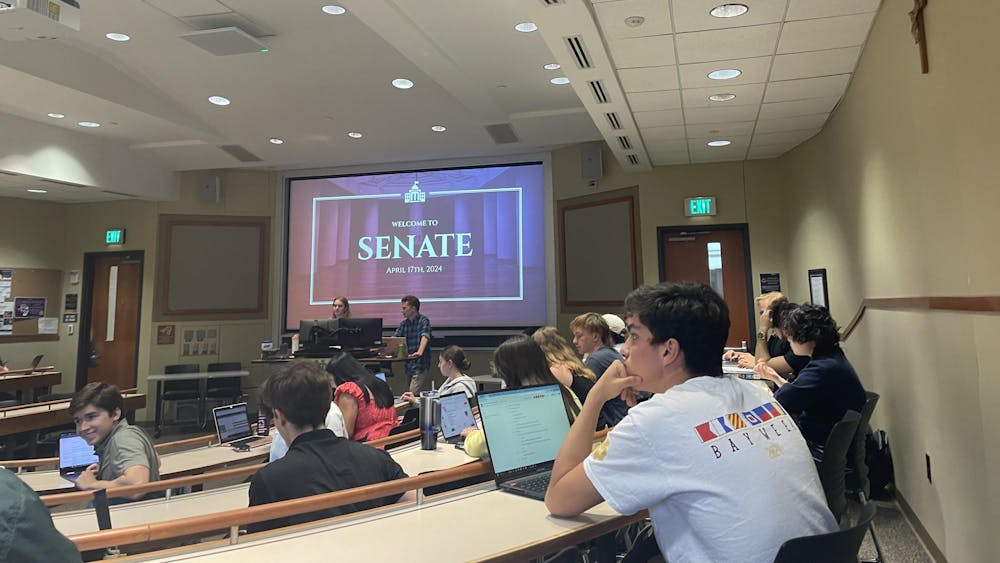Saint Mary’s students danced their way to discovering personal identity Monday during “The Salsa Story: Embracing Dance through Dialogue,” an event in the annual Diverse Students’ Leadership Conference (DSLC).
Associate professor of humanistic studies Laura Ambrose and assistant professor of music Emily McManus led the dance lesson and discussion. In addition to teaching the basic salsa step, they also taught variations of salsa — cumbia, side step, merengue and tango.
Ambrose said knowing the origins of salsa dance will help students determine what stereotypes exist and what is culturally accurate.
“It is a representation of pan-Latin identity,” she said. “It is danced throughout the Americas, and, as of the 21st century, globally.”
According to Ambrose, pan-Latin is term that is inclusive to all people who are of a Latino heritage. There is no single global version of salsa, but there are interpretations based on the community — Cuban, Puerto Rican, Dominican, etc., Ambrose said.
“It becomes this innate way of creating community,” McManus said. “It can also be a way of building communities or excluding communities.”
Some styles of salsa are favored more in certain cultures, while other styles are looked down on, which causes a cultural separation, McManus said.
“We continually perform identities,” she said. “It’s where your cultural affiliation is.”
Dances have stereotypes that are often different from the real reasons people learn to dance, McManus said.
“‘Dancing with the Stars’ is representing a generic ritual,” she said. “They’re not realizing anything about cultural affiliation.”
McManus said students are often concerned about what to wear when attending dance lessons, rather than on the dance itself.
“I thought I had to wear heels,” McManus said. “But then I found myself falling. Anyone can do this — you don’t have to wear anything specific.”
Ambrose emphasized dance is not only about how someone looks while dancing, but how the person feels.
“I started dancing when I was in college,” she said. “It was an avenue to my femininity and my sexuality. My relationship with dance was fundamentally me becoming comfortable with my body.”
Senior Student Diversity Board fundraising chair Katherine Morley said she had only one previous experience with dancing the salsa, but the workshop gave her a new perspective on the dance.
“It was interesting to learn about,” Morely said. “It was cool to see it as an adult now and think of it as a club setting and not just on ‘Dancing with the Stars.’”













